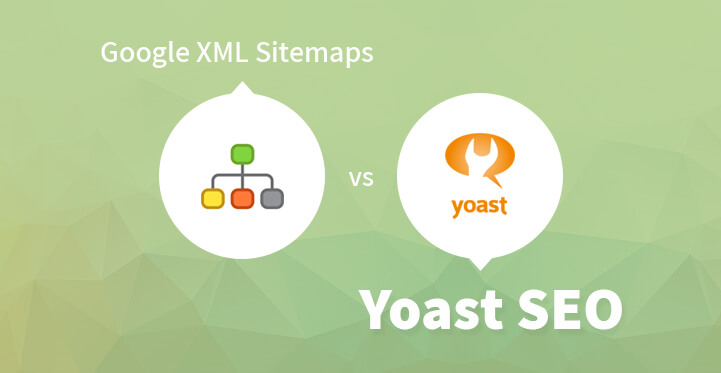Google XML sitemaps
If you have just launched your first professional website, then you need to know that it is essential that your website features a sitemap.
Table of Contents
Of course, you could wonder about the need for one, but it is a fact that search engines index sites that come with sitemaps.
A site map is essentially a collection of URLs that tells a search engine bot what pages of their website can be indexed, how often these links have been updated and their relative importance to each other.
A website with a proper site map in place gets indexed faster, and gets more traction online which is all the more reason that you need to have one of these two plugins in place.

You can opt for either Google XML sitemaps or Yoast SEO; of course, Yoast SEO comes with more tricks up its sleeve but let’s take a closer look at both of them and see how they pan out.
1. Google XML sitemaps :
The great thing about Google XML sitemaps is that it is an extremely focused product, one that offers you more map generating options than any other product out there.
And while the product has been downloaded about 17 million times, which is slightly less when compared to Yoast SEO, it still gets a higher rating which speaks as regards the quality of the product itself.
For starters, the Google XML sitemaps is extremely easy to download and set up, and comes with customizable settings. It is a lot less complicated than some of the other sitemap plugins out there.
Some of the options with this specific plugin is that it allows you to modify notification settings, XSLT style sheets, create additional custom pages, priorities, sitemap content types, review and modify excluded items, and to change frequencies and priorities.
This nifty plugin certainly has a lot to offer and is fast becoming one of the essential plugins that every owner needs to install on their website.
What’s more, this plugin gives you better control over your content to get the sitemap that you need. The only downside is that the files generated may seem odd but then again, these files are not meant for human consumption but are generated for the search engines instead.
Related Post: What is an XML Sitemap? How to Create a Sitemap in WordPress?
2. Yoast SEO :
Yoast SEO is a massive plugin that covers just about everything that’s SEO related, and its functionality is not limited to sitemaps alone.
In fact, the site map functionality of Yoast SEO forms just one small aspect of all that this plugin can do, which explains the increasing popularity of this plugin.
And comparing both Google XML site maps with Yoast SEO (in its entireity) is silly to say the least so it is better to compare the site map functionality of both as that should give you a good idea of which one is better as far as site maps go.
This plugin has been downloaded 19.6 million times and that number is indeed whopping, but it is rated less than Google XML site maps, just about.
The two downsides to Yoast SEO is that it only works when you dress up your permalinks. If you leave your permalinks on a default setting, it does not work – go figure.
The other downside to Yoast SEO is that it goes into a hyper drive should you activate Google XML site maps even when you are not using Yoast SEO for site maps for your website.
But other than this, this plugin does provide a decent enough site map, but one that comes with fewer settings. It’s time that we got to the brass tacks and compared both of them.
Comparing the site maps
Well, we are comparing the site map functionality of both Google XML site maps and Yoast SEO; and on the outset, Google XML site maps comes with a better look, and the slightly large font helps to make it more attractive.
Both the site maps follow a different logical structure, with Yoast using type archives like page-sitemap.xml, post-sitemap.xml, category-sitemap.xml and more of the same.
Google XML site maps comes with more sub sitemaps, neatly organizes your content into monthly archives which is easily accessible. More importantly, it comes with a size restriction as far as its format goes.
In other words, each site map you generate must be no larger than 10 MB. And since Google XML generates site map as archives, with month based separation, the corresponding file should amount to only a few kilobytes.
In simple terms, with Google XML site maps, less strain is placed on your server and your website should perform more efficiently.
But that argument works only when you have a large website with hundreds of pages and if you are running a small website, then you can opt for either plugin.
Yes, Yoast comes with a lot more than just site maps and that’s why it is turning out to be more popular than Google XML site maps.
In fact, with this single plugin, you should be able to optimize your website for SEO, tweak and streamline your content and generate site maps at the same time.
However, as far as site map functionality is concerned, Google site maps comes out on top on account of the fact that it comes with more options, allows you granular control over your content, and produces perfect site maps, irrespective of whether the permalink is dressed up or not.
It would be a good idea to use both the plugins, and the Google XML sitemaps for better functionality, and for better site maps. On the whole, Google XML site maps comes out on top with Yoast SEO a close second.
But keep in mind that you would need to have a good sitemap in place to make sure that the search engines index your pages faster.
And if you have just started a business website, it is all the more essential that you have the requisite site map plugins in place.
As far as site maps go, both these plugins generate good site maps which are loved by other search engines, the only thing is that Google XML site maps comes with better options than Yoast SEO.


